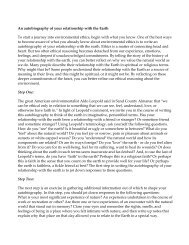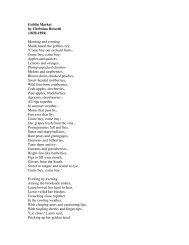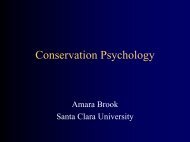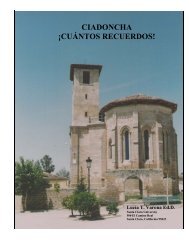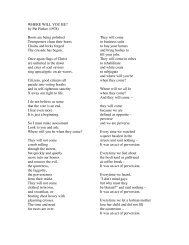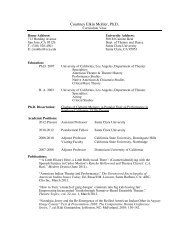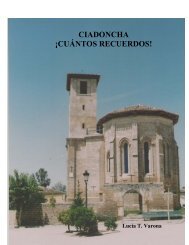ciadoncha; ¡cuántos recuerdos - Webpages at SCU - Santa Clara ...
ciadoncha; ¡cuántos recuerdos - Webpages at SCU - Santa Clara ...
ciadoncha; ¡cuántos recuerdos - Webpages at SCU - Santa Clara ...
Create successful ePaper yourself
Turn your PDF publications into a flip-book with our unique Google optimized e-Paper software.
CHAPTER 3<br />
A BIT OF HISTORY<br />
The name<br />
The professor, Arcadio Varona Madrid, born in<br />
Ciadoncha, published a story a few years ago about the town<br />
in the magazine called “Ciadoncha, after its footprints” (13-<br />
16). There he explained th<strong>at</strong> the origin of the town’s name is<br />
a true unknown for the researchers because in the<br />
Found<strong>at</strong>ional Document of the Abbey of Covarrubias it<br />
appears as “Cibt<strong>at</strong>onia”. Further ahead, on the sixth of<br />
December of 1209 the term of Ciadoncha begins to appear, but<br />
it does not remain clear how it went from Cibt<strong>at</strong>onia to<br />
Ciadoncha.<br />
The historian Gonzalo Martínez Díez says.<br />
Arcadio Varona Madrid<br />
“CIADONCHA.-28-XI-988: Cibt<strong>at</strong>onia, 6.XI.1209: Ciadoncha, derived<br />
from the origin<strong>at</strong>ing Cibt<strong>at</strong> <strong>at</strong> the same time of civitas; the second<br />
component does not appear clear <strong>at</strong> all, possible origin<strong>at</strong>ing from the<br />
suffix of - onica or –onga in the same way th<strong>at</strong> –monte has formed<br />
montonica or montuenga” (300)<br />
In the town, there are comments th<strong>at</strong> Ciadoncha comes from “Ciudad ancha”<br />
(wide city), but there are not any documents th<strong>at</strong> support this version.<br />
Birth<br />
Varona Madrid comments in the same article previously cited th<strong>at</strong> the d<strong>at</strong>e of<br />
birth of Ciadoncha can be placed between 915 and 930. Well, administr<strong>at</strong>ively,<br />
Ciadoncha appears in the census of 1591-1594 as included in the district of Partida<br />
Yglesias. At the end of the 17th century it appears as part of the district of Can de Muño,<br />
where it appears with the c<strong>at</strong>egory of town and jurisdiction of secular rule. As of 1843,<br />
Ciadoncha begins to form part of the district of Lerma with 200 habitants.<br />
Martínez Díez says th<strong>at</strong> Ciadoncha pertained to the Alfoz (administr<strong>at</strong>ive<br />
division) of Muñó. The alfoces (administr<strong>at</strong>ive divisions) were the small districts<br />
wherein the county of Castilla was subdivided. The word is of Arabian origin, from the<br />
word al-hauz, th<strong>at</strong> means canton or district. This makes it clear th<strong>at</strong> we are before a<br />
vocabulary imported from Al-Andalus or the Mozarabics (Christians from Spain<br />
submitted to the Arabian domin<strong>at</strong>ion) th<strong>at</strong> resorted to the repopul<strong>at</strong>ion of the Leon and<br />
Spaniard lands since the second half of the 9th century. (10).<br />
25





